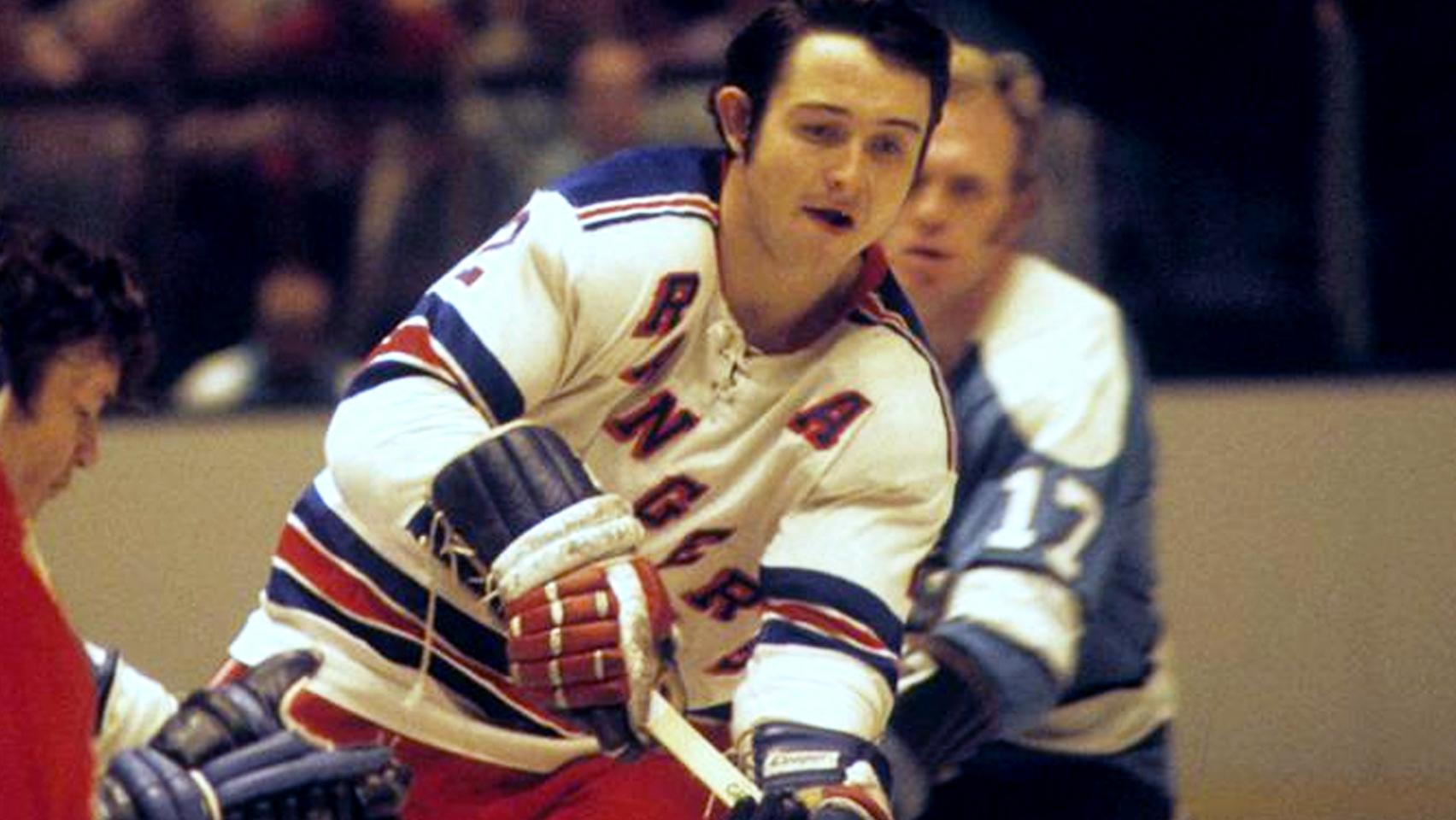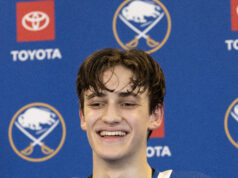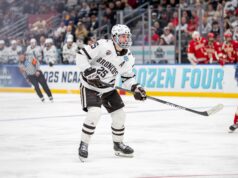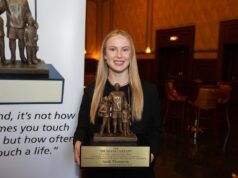By Stu Hackel / Special to NHL.com–
Steve Brklacich was a hockey lifer, a minor pro player, coach, and eventually — as longtime hockey writer Andy O’Brien called him — “a keen-eyed scout with a name like an optician’s chart.” In 1966, while scouting for the New York Rangers, Brklacich watched junior defenseman Brad Park skate for the Toronto Marlboros and wrote in his report to general manager Emile Francis that this particular 17-year-old “would be an earlier-than-expected All-Star whose style could keep him in the NHL for 20 years.”
Now that was some pretty good scouting. Brklacich’s assessment led Francis to select Park with the No. 2 pick in the 1966 NHL Draft, launching a Hall of Fame career that confirmed Brklacich’s vision: After finishing third in voting for the Calder Trophy, given to the League’s top rookie, Park made the NHL First All-Star Team in his second season at age 21, showing the world what Brklacich saw: “a rare combination of aggressiveness with poise beyond his years.”
Park’s NHL career lasted 17 seasons with the Rangers, Boston Bruins and Detroit Red Wings, and he might well have reached Brklacich’s 20-year prediction had he not suffered the cumulative effects of five knee surgeries.
“It’s hard enough playing in the NHL when you have two good knees; try playing wearing knee braces,” Rangers teammate Walt Tkaczuk told author Thom Sears for Park’s biography, “Straight Shooter.” Because braces restricted Park’s movements, Tkaczuk said “he couldn’t pivot the way he may have wanted to, but he had the talent and skills to make the necessary adjustments to his style.”
Even though his bum knees diminished his speed and mobility, there really wasn’t much Douglas Bradford Park couldn’t do patrolling the blue line. He remained an excellent passer, puck-handler and shooter, a strong physical presence at 6-feet, 200 pounds, with a marvelous sense of positioning and anticipation, all informed by a high hockey IQ.
Star forwards knew what Park was all about. When NHL coaches gave pregame instructions, “Brad was usually the talk of the meeting,” Hockey Hall of Fame forward Marcel Dionne said on the “Legends of Hockey” TV series. “You knew he controlled the puck. To go one-on-one with him was a challenge.”
“He had the great timing where he’d always edge you off to the corner, and when you shot, you were against the boards,” Hall of Fame defenseman Lanny McDonald said. “And you wondered, ‘Where did I go wrong here?’ And you understood why he was an All-Star.”
Park also made a distinct impression on Philadelphia Flyers Hall of Fame center Bobby Clarke. “He was one of the first that I recall who could take the puck — and he did it for his whole career better than just about anybody — start going back towards their own end and pull the darn thing forwards and then they were such good passers that one pass and all of a sudden they’ve got a 3-on-2 going the other way,” Clarke said. “And he could join the rush. And he was a big, real thick man. If he hit you, he hurt you.”
Park made the NHL First All-Star Team five times and the Second All-Star Team twice. He was an eight-time runner-up for the Norris Trophy, finishing second mostly because of the one defenseman who was second to no one, and who also inspired him — Bobby Orr. “Nobody could control the game like Bobby Orr could control the game,” Park told “Legends of Hockey.” “He set the tone on the ice. When we played against each other, I was going to play as well as I could because he was the measuring stick. The closer you could be to him, the better you were.”
The two would be intertwined for nearly a decade, and not only because of the fierce Rangers-Boston Bruins rivalry of their era. As Orr’s knees weakened, causing the Bruins to seek a replacement, Boston GM Harry Sinden wanted Park. On Nov. 7, 1975, Sinden and Francis engineered one of the biggest trades in NHL history, sending Park from the Rangers to the team he detested the most, meaning he’d play — and star — for fans who had detested him the most. (Jean Ratelle and Joe Zanussi also went to Boston in the trade, for Phil Esposito and Carol Vadnais.)
“There never was a hockey player so beloved in one city and so hated in another, only to have the roles reversed after eight years,” wrote hockey historian Stan Fischler.
That isn’t the whole story; Rangers fans had turned on Park prior to the deal, believing he was, as Sports Illustrated’s Jerry Kirshenbaum described their dissatisfaction, “overweight, overpaid and — though only 27 — maybe even over the hill.” Before that, they certainly had adored him since his rookie season.
He first won their hearts by thumping opposing players. Francis kept his own hit count in those prehistoric days before real-time stats, and Park, even as a rookie, was a Rangers leader. He was also a Rangers leader in fighting majors, much to the delight of fans at Madison Square Garden.
And Park often ignited the flashy Rangers offense, led by the “GAG (Goal-A-Game) Line” of Rod Gilbert, Jean Ratelle and Vic Hadfield. “The ‘GAG Line’ would never have been as successful as it was without Brad feeding us the puck to start the attack,” Gilbert told Sears. “He was our general back there on the blue line.”
Ratelle agreed, saying, “Sometimes you’re only as good as the players beside you and Brad certainly complemented our line in all situations.”
He was nearly a point-per-game player by 1971-72, when he had 73 points in 75 games, and his 24 goals tied him with Vadnais for the fourth-highest total by a defenseman in NHL history (Orr had the top three). He also had 49 assists. The Rangers advanced to the Stanley Cup Final that spring, and Park’s 11 points included two power-play goals in the first period of Game 3, making him the first defenseman to accomplish that in a Stanley Cup Playoff game.
But the Rangers couldn’t top Orr and Boston in the six-game 1972 Final, especially with Ratelle far from 100 percent after breaking an ankle. Park then signed a lucrative contract to keep him from jumping to the World Hockey Association and starred for Canada in the ’72 Summit Series. After injuries limited him to 53 games in 1972-73, he had NHL career highs in goals (25), assists (57) and points (82) the following season.
But the once-powerful Rangers started to decline. At 26, Park became the youngest Rangers captain ever in ’74, but another knee injury didn’t help the Rangers’ slide, and when they began 1975-76 poorly, he was booed at the Garden. As his biggest move in a franchise tear-down, Francis traded Park to Boston.
Boston!
In his 1971 autobiography, “Play the Man,” Park had called Bruins fans “maniacal” and Boston Garden “downright grubby.” He had disparaging words for Bruins players Derek Sanderson, John McKenzie, Ted Green, Esposito and even Orr, whose reputation as a clean player he disputed.
His exceptional play for the Bruins made forgiving easy. A year after the trade, Kirshenbaum’s story on Park’s revival was headlined, “Boston’s Favorite Park Is Not Fenway,” and he reported that a sign hung from the Madison Square Garden balcony one night reading, “Brad Park we miss you, please come home.”
“Brad was unbelievable for the Bruins,” Don Cherry, his coach in Boston from 1975-80, said in “Straight Shooter.” “He played nearly 30 minutes a game. He was tough as nails and could body-check with the best.” Cherry called Park’s point shot a “cannon.”
“On some really, truly good Bruins teams in the second half of the ’70s, Park was just one of the most valuable players in the league,” veteran hockey writer Frank Orr said on “Legends of Hockey.” “He was an excellent defensive defenseman. He killed penalties, he played the power play, he was out in the last minutes of all periods, and he played extremely well.”
Park went to the Stanley Cup Final twice with Boston, losing to the Montreal Canadiens each time. He never won the Cup. “I played on great teams,” he said decades later. “Unfortunately we got beat by better teams at that time. To go through life and do what you want and get paid for it, it’s a great thing. To play in the best league in the world was always an honor.”
Park was able to claim one unmatched postseason distinction: He helped the struggling Red Wings make the playoffs in his final two seasons, meaning he qualified for the postseason in each of his 17 NHL seasons, breaking Jean Beliveau’s record of 16. “I never even knew about the record,” he told Kevin Shea of hhof.com, “But when I joined the Wings, the only goal I had was to help the team get into the playoffs.”
When he retired in ’85, he was the all-time assist leader among NHL defensemen with 683 and ranked third in goals (214) and points (896).
Born July 6, 1948, Park grew up in Scarborough, Ontario, where his father, Bob, was active as a youth hockey referee and coach. “He and his dad used to place the salt and pepper shakers on the kitchen table like chessmen in analyzing defensive plays,” his mother, Betty, told O’Brien in the book “Superstars: Hockey’s Greatest Players.” “Then they’d adjourn to the living room for animated discussion on body-checking while I fretted over the furniture.”
Often skating with and against older kids, Park developed into a strong player and was part of the Scarborough Lions team that won the first Quebec Peewee Tournament in 1960.
At 15, he was still small, only 5 feet. But Brad grew eight inches in a year and when he tried out for the Marlboros in ’65, he got noticed in the first scrimmage by slamming Brent Imlach, son of Punch, the Maple Leafs coach and GM, and knocking him out. He made the team and in ’67 would star for the Memorial Cup champions there.
One season earlier, Steve Brklacich could see even further into Brad Park’s future.
(Reprinted with permission of NHL.com) (NHL.com photo)







